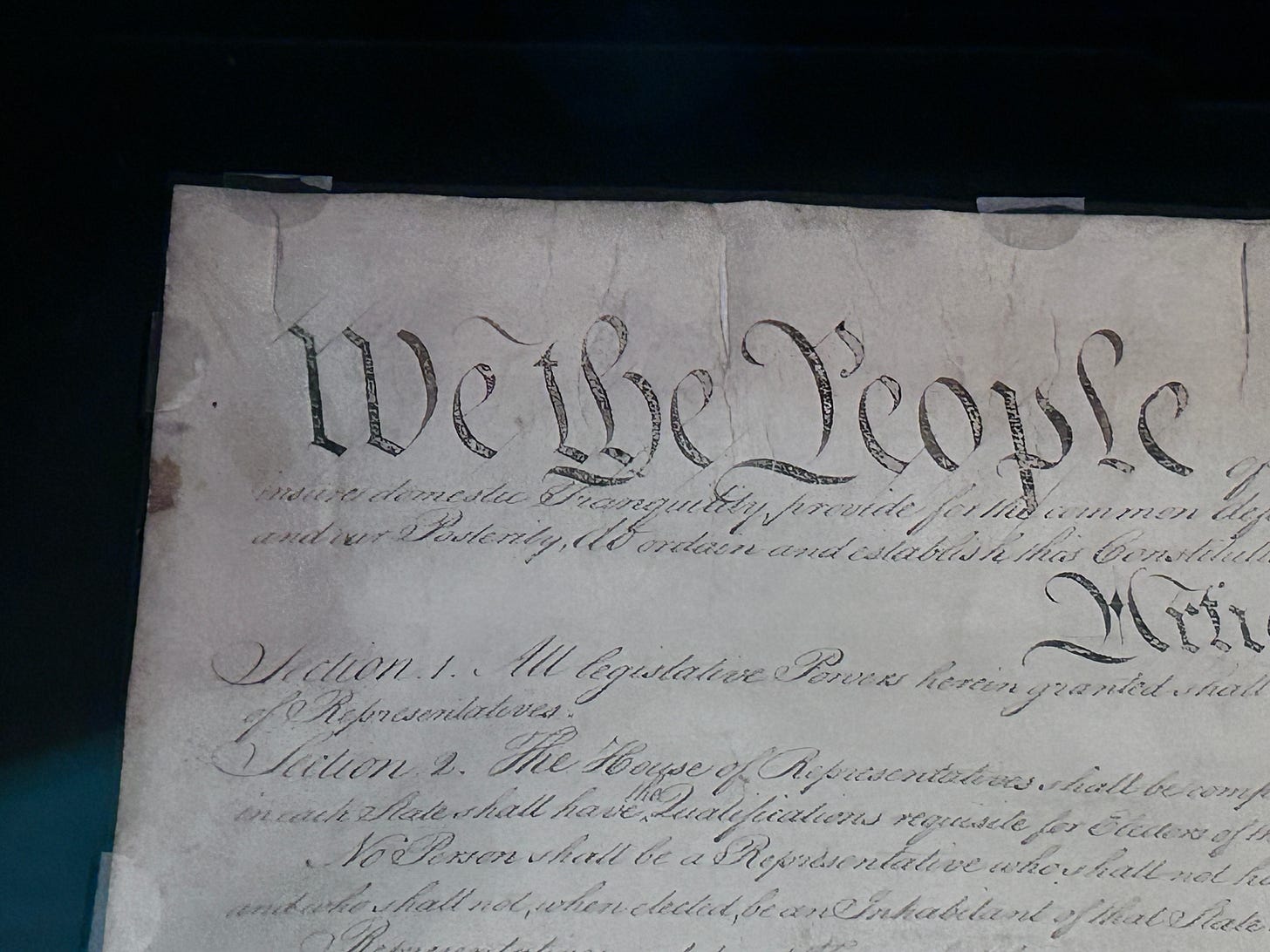When in the Course of Human Events: A Trip to the National Archives
A quick check-in before the government shutdown
With the government shutdown looming this week, I thought I’d better move up my annual visit to the National Archives to see the Charters of Freedom — the Declaration of Independence, the Constitution, and the Bill of Rights.
Or, as I like to think of them in communicator terms: a sign-on letter, some message points, and an updated listicle. Our national press kit.
Visiting documents may sound like a silly tradition, but I think of it as a “democracy palate cleanser.” When the world seems to lose its way, I find it refreshing that these fading 250-year-old documents still underpin the framework of society.
And, I’m happy to report that they’re in good shape. They haven’t aged a day —probably because no one in Washington ever uses them.
Is there a TSA Pre-Check line?
Going into the Archives building, you realize you’re entering the presence of something important, singular, and iconic with airport-level security — sort of like if Taylor Swift held a concert in Terminal B at Dulles.
The experience underscores the gravity of the building’s collection, but I think this airport-style screening fits better thematically over at the Air & Space Museum.
Friendly, well-informed guards guide you up to the rotunda, a room framed by spiked gates where the Charters of Freedom — the Declaration, the Constitution, the Bill of Rights, and some other memos — sit in bomb-proof, argon-infused cases.
New messaging — if you know, you know
Guards used to describe how the displays sit on heavy-duty lifts that lower them deep into subterranean vaults each night, but now when you ask about security, they just smile uncomfortably and change the subject.
They are still eager to provide other insider details, though. When I asked if the Magna Carta was on display, one guard whispered, very seriously, “No ma’am, it’s resting.” I like the idea of the thousand-year-old Magna Carta draped across its fainting couch “resting” like a Victorian lady with the vapors: “Perhaps the Emancipation Proclamation could receive for me today.” Western civ as told by Virginia Woolf.
The entire scene reassured me that the Charters of Freedom aren’t going anywhere. It’s fortunate, because if the Constitution ever watched the news, it might try to make a break for it.
A committee effort
When you finally get to the documents, you realize they’re very human products: Committees of local politicians trying their best. It’s really no different than what still happens today in thousands of city halls, county offices, and town meetings — people huddled around tables hammering out ideas to keep our country functioning.
The handwriting isn’t perfect. Sometimes the script is a little uneven, and random words are too big, like the Founders couldn’t agree on a font.

They are a little tough to read, but that probably doesn’t matter to most visitors. I heard one woman ask her husband if the documents are written in “English or cursive.”
But once you decipher them, you realize the words have a modern ring. As I scanned the Declaration of Independence, I noticed it sounds a lot like a Comcast service update:
“Dear King George, We are happy to inform you that as of July 4, we will be changing our lineup to replace the British government with a new American government. We are certain you will enjoy our new programming!”
Newer documents carry their own subtexts. During my visit, the Archives had all the Constitutional amendments on display. The most recent, the 27th Amendment, ratified in 1992, gives Congress pay raises after elections. It’s a typed document with a little red ribbon on it, as if legislators sent themselves a Hallmark card to mark the achievement.
If those legislators ever get back to work, I look forward to visiting the Archives again soon. I just hope someone remembers to file the memo ending the government shutdown.





I like your tradition. It is one all Americans, especially those in power, could benefit from emulating.